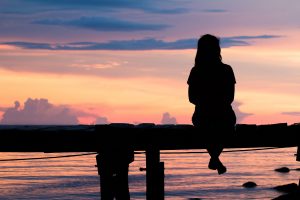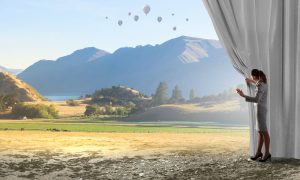Around this time last year, I was a History major at Illinois Central College (ICC) in Peoria, IL, and was struggling to find passion in what I was doing in school. I was in Community College and couldn’t help but feel like I wasn’t doing as much as my high school classmates who were at “real” colleges. I felt like I wasn’t doing as much as a 19 year old should be doing. Because of this, my grades were slipping and I wasn’t doing as well at work. I was in a funk.
It wasn’t until September of last year, while I was all but sleeping my way through Physics 110, that I heard about a NASA program for community college students. It was called NCAS, which stands for NASA Community College Aerospace Scholars.
My Physics teacher, Professor V, told us about this program, and it’s benefits, but none of us were interested. I mean, I was a History major, what did NASA need with me?
A few weeks later, however, a middle-aged man named Matt came and spoke with us about the program. He said that he had come to ICC to continue his education at the age of 40. He had heard about his opportunity from Professor V as well, and decided to apply even though his grades weren’t that great.
There are small but easily attainable eligibility requirements as stated on their website:
- U.S. citizenship
- High school graduate or equivalent and at least 18 years of age
- Registered at a U.S. community college during the semester of the onsite workshop
- Concurrent enrollment or completion of 9+ hours of STEM coursework
- Able to commit to a 5-week online session
- Internet access
- Letter of Recommendation
Matt was accepted into the program and after 5 grueling weeks of online work, was accepted into the onsite experience at NASA. Then, he applied to NASA for an internship after, and was accepted.
“At 45,” he said, “I never thought I would leave Peoria again, and now I’m working for NASA, and they’re paying for me to move there.”
This intrigued me. If Matt could do it achieve dreams he never knew he had at 45, imagine what I could do at 19.
So, I applied. However, the teacher who I had asked to write my recommendation never got back to me after promising to write my letter. I didn’t know what to do.
Luckily for me, the people at NASA gave me a 15-day extension to get my letter. I contacted my Anatomy and Physiology teacher from high school, who sympathized with my situation and gladly wrote me a letter, on the promise that I let her know how it went, of course.
So, in January of 2017, I began the NCAS course online. The course consisted of 3 sections, each with 2 subsections. The subsections had a lot of links, articles, and videos to look at and study. Each subsection took anywhere from 3-5 hours to finish. Then, at the end, there was a 10-question quiz. Thankfully, we could take the quizzes an infinite amount of times. To pass the course, you had to get at least a 90% on each quiz. I made sure I took them until I got a 100% on each quiz, because I figured if I was going to impress my family and friends by taking this course, I wanted to say I gave it my all.
At the end of the course, there was a final project due. You could pick between 3 topics:
- The Evolvable Mars Campaign: Prepare a 6-7 page paper that responds to any three (3) of a series of questions.
- Plan a Robotic Rover Mars Mission: Write an abstract (brief summary) of the robotic rover Mars mission. The abstract provides an overview of the goals and objectives of the mission. List and explain at least one overall goal and (three) 3 supporting objectives of the mission. The abstract should be between 300 – 600 words.
- Mars Rover Design: Design the next NASA Mars rover. Use creative and innovative ideas to make an original, unique and purposeful rover design. This included a 3-D graphic design with labels and parts clearly drawn, as well as a paper detailing the rover specs.
I chose to do #3, because drawing was what I was good at, and I loved design. Looking back, however, I think I would have done best at #2. I love managing and planning, and now think that would have been a better fit.
I submitted my project just two minutes before the deadline. As soon as I pressed that button, all I could think about was all the things I forgot to include, and all the things that I should have done better. I didn’t think that I would get into the onsite experience, not when my work was not as good as I wanted it to be.
But I did get in, and it was amazing. My mother was so proud of me. She told all my aunts, her friends, and even posted about it on Facebook. Now, my mother is Irish and Native American, we don’t really say the word “proud” out loud or express a lot of emotion, so I really knew my mother was honored to have a daughter going to NASA.
About a month later, we found out our flight itineraries, and were ready to go. Thankfully, all we had to pay was a $30 check for our team color polo. Other than that, NASA paid for everything; the flight, hotel, and food. The only other thing that we needed to pay for was our souvenirs. Plus, we got plenty of snacks.
On April 10, me and my boyfriend Shawn (who also got into the program), headed for John Glenn Research Center in Cleveland, Ohio. I know what you’re thinking, “Cleveland? There’s a NASA in Cleveland?” Yes, and it’s amazing. They boast the loudest room in the world and the longest microgravity tunnel (510 feet).
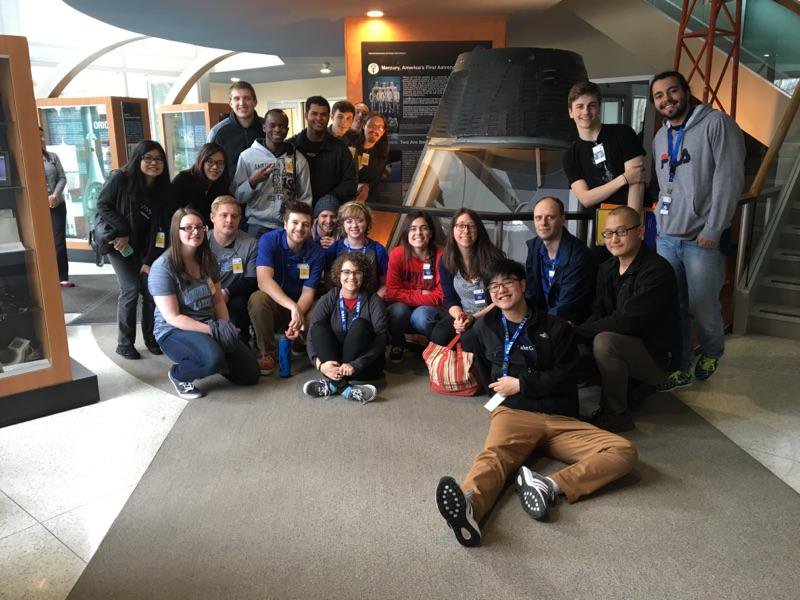 When, we arrived at Cleveland International Airport there waiting for us were 3 NASA reps to take us on a shuttle to the hotel. Now, we were among the last to arrive, so as soon as we got to the hotel, we had to drop our luggage and head straight to John Glenn Research Center. Most of the other scholars had been there for hours, and had already gotten to know one another. So, Shawn and I were left to get to know our teams on the ride there.
When, we arrived at Cleveland International Airport there waiting for us were 3 NASA reps to take us on a shuttle to the hotel. Now, we were among the last to arrive, so as soon as we got to the hotel, we had to drop our luggage and head straight to John Glenn Research Center. Most of the other scholars had been there for hours, and had already gotten to know one another. So, Shawn and I were left to get to know our teams on the ride there.
When we finally got to set foot on NASA grounds, we were taken to an auditorium and introduced to Robert La Salvia, Chief, Office of Education at NASA GRC (Glenn Research Center), who welcomed us to NASA and commended us on our hard work in the NCAS course. We were also introduced to Vanessa Webbs, Internship Project Manager at NASA GRC, who told us a bit about the internship programs at NASA GRC, and how we could apply.
We then had a guest speaker, Danielle Griffin, who works with Technical & Quality Audit Lead, come speak to us about her NASA journey. She began as a summer intern who was unhappy with the internship program. She spoke up to her supervisors about how she wasn’t learning the way that she was being taught. Her supervisors didn’t like that, so they placed her with someone who was a better fit to teach her. She then went on to bounce all around NASA, trying different kinds of work, eventually landing in T&Q, where she is happy. She told us that she thought that if she hadn’t spoken up, she wouldn’t be where she is today. Danielle also told us that she was happy with the way NASA had tried their best to make both parties happier in the workplace, and to help Danielle find the best place for her.
We were then introduced to Kevin Biddell, who was the facilitator of the onsite experience. Basically, he ran the whole thing and managed to keep 45 college students on time.
After being accepted into the onsite experience, we were given team colors and were tasked with creating a company before arriving at NASA. My team was the Gold Team, and consisted of 10 other people. We ended up coming up with the name Gold Standard Aerospace Company and our motto was “Go With Gold.” We were given a $6 million dollar budget for the onsite experience. After Danielle gave her speech, we had an introduction to the LEGO EV3 kit. Basically, it’s a $500+ LEGO kit with a motor. We were shown how to program the EV3 to do basic movements, and then were tasked with making it draw our logo.
 We thought our logo would be easy to draw, since it was just a G with an arrow in the middle of it. We found that this was not the case. First, we had to jerry-rig the EV3 to hold a marker, and to do that we had to tie it with a LOT of tape and rubber bands. Then, we had to program the rover with the EV3 program. It took a bit of trial and error, but eventually we got a symbol similar to a G. It was great practice for the Rover we would be building for our final projects and competitions.
We thought our logo would be easy to draw, since it was just a G with an arrow in the middle of it. We found that this was not the case. First, we had to jerry-rig the EV3 to hold a marker, and to do that we had to tie it with a LOT of tape and rubber bands. Then, we had to program the rover with the EV3 program. It took a bit of trial and error, but eventually we got a symbol similar to a G. It was great practice for the Rover we would be building for our final projects and competitions.
We also came up with a set of Team Values that we could use to work together better even though we didn’t know one another at all. We came up with “WOOSH” (Work-ethic, Open Mindedness, Optimism, Synergy, and Honesty), and we vowed to “blow them away.”
Finally, at 9 pm, after a long day, we had dinner, and departed to the hotel.
Now, we thought Day 1 was long and difficult. We had no idea what we were in for with Day 2.
We had to wake up at 6 am, leave the hotel by 7 am, and when we arrived we were given our Project Overview, which was a portfolio and timeline of our project and competition that we would be doing for the next three days. We also figured out our team positions. I was the Project Manager, which means that I oversaw the entire project. I worked with the designers, engineers, and programmers during the whole project and was the only contact between the team and Headquarters (who were like our judges, but not for the competitions, for everything else that we did).
We met our Team Mentors, who were actual employees of NASA that were going to help us build our Rover and keep us on track with the project. Gold Team’s mentors were John and Stefani, and let me tell you, we couldn’t have done it without them. Their expertise and helpful insights really helped our project come together.
After being introduced to our mentors, we were dismissed to our team rooms for a few hours to work on designing and building our rover because we had a competition later that day. You read right, folks, we mere college students were tasked with designing, building, programming, and budgeting a Rover to move and collect things all within the space of about 5 hours. It was very stressful.
 Now, Gold Team went head-to-head with the Navy Team. We couldn’t cross into the other team’s territory and we had to collect as many rocks as we could within the space of 10 minutes. Different sizes of rocks we worth different amounts of money. It would then go toward our budget for the competition the following day for any modifications we wanted to make. We had 2 minutes to test, 2 to make any corrections, and 10 to do the actual competition. If the Rover gets stuck on the course before returning to home base, you get a 30 second penalty. If it goes past the boundaries, 30 second penalty.
Now, Gold Team went head-to-head with the Navy Team. We couldn’t cross into the other team’s territory and we had to collect as many rocks as we could within the space of 10 minutes. Different sizes of rocks we worth different amounts of money. It would then go toward our budget for the competition the following day for any modifications we wanted to make. We had 2 minutes to test, 2 to make any corrections, and 10 to do the actual competition. If the Rover gets stuck on the course before returning to home base, you get a 30 second penalty. If it goes past the boundaries, 30 second penalty.
Right off the back, we got a penalty of 2 million dollars because we were still downloading our program when the timer went off. Then, about 3 or 4 minutes in, our robotic arm fell off! Now, according to the rules, we were done for, competition over. Luckily, the Navy Team also had a malfunction before the time was up, so the judges let us make adjustments for a later-determined penalty (which ended up being another 2 million dollars in penalties). Then (as shown below) our Rover, which we lovingly named Exodus, began working amazingly. You can probably hear us screaming in the background we’re so excited to be back in the race.
https://twitter.com/gsa_NCAS/status/851897638727405571
By the end of the race, we’d won 124 million, but with the 4 million dollars in penalties, we ended up with an extra 120 million dollars to our budget. We’d thought we did the worst, but it turned out that we did the best for the first challenge.
As Project Manager, I had to turn in Progress Reports, a Statement of Work, an Organization Chart of our team’s positions, and our company name, logo, and motto to Headquarters. I had to present our teams case, and talk about our hopes for future projects (theoretically) and treat the project like an actual company.
After the challenge, we had dinner and got to meet Nicole Smith, the Project Manager for Orion Testing at Plum Brook Station for the Orion Spacecraft. We the debriefed for the next day and departed to the hotel after a 13-hour day.
Now, they told us to get some sleep when we returned to our hotel, but all the teams spent at least 3 hours at the hotel planning for the next day. My roommate Connie and I were the Project Manager and the Marketing Manager, so we had to stay up even later to work in our room after everyone left. We were the ones who got barely any sleep. I think we averaged 3 hours a night. It was brutal, but I loved every minute of it.
As with the day before, we had to be awake by 6, and out the door by 7. We had another project overview, and then went on a tour of the NASA facilities (Pictures below), and then got to visit the gift shop. Then lunch, and then we went straight back to our team rooms and were back to work adjusting the rover and improving it for that day’s competition.
Thankfully, we did not have nearly as much trouble with our Rover during the second competition. With this competition, the rules were still the same, but mini LEGO pieces were added to the course and were worth a LOT more money. So, we went for those. At the end of that competition, which you can see a fast-forwarded version of here (https://twitter.com/NASAglenn/status/852285270833721344), we made a profit of 294 million dollars, with no penalties!
After this, our second progress report was due, and we had dinner and went back to the hotel after another 13-hour day. As with the day before, we worked on our final presentation for a few hours after we got back to the hotel, and then went to sleep.
The last day was the most stressful, even though it was the shortest. We had a few hours to put together final touches on our presentation. All 11 of us had to speak, and it had to be under 10 minutes. We were a little nervous about that. We all had made such amazing contributions to the project, and we got about an average of 30 seconds to speak because me, the main engineer, programmer, and marketing manager had to speak the most because we were the heads of our divisions. Luckily, we pulled it together. We did, however, go over about 2 minutes and got knocked down a few points.
We then had an awards ceremony, where we got certificates of achievement. Each team picked an MVP. We picked Eric, our chief engineer. He had the most insight and was like the Dad of the group, bringing the chaos together when we were all talking at once. He helped us work together more efficiently and we couldn’t have done as well without him.
Finally, we got to learn who won the competition. It was us, Gold Team for the win! It was so exciting. From the beginning, we were so unsure of our ability to work as a team when we didn’t know one another. I was especially stressed being project manager. I didn’t think I had what it took, it was so much responsibility. Thankfully, I managed to do a good job and help my team. Also, being in my position, I got to learn so much. I didn’t know anything about design or programming when I got there, and overseeing the whole team, the members who did know helped me learn about it.
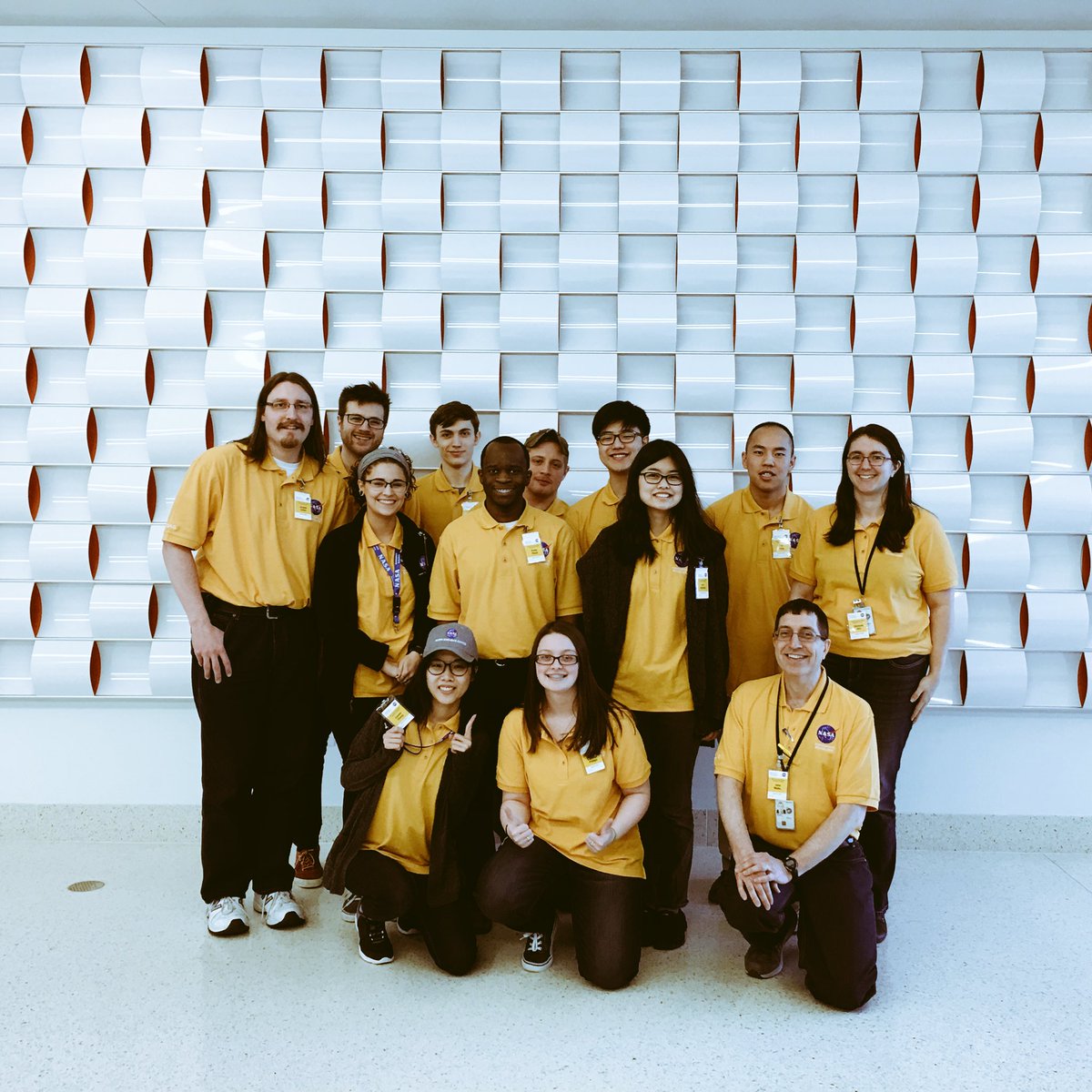 This whole journey has helped me realize what I want to do with my life. While taking the online class, I changed my major to engineering and aerospace technology. Then, while working as project manager, I added marketing and business to my long list of interests. This experience even helped me get this job! And I love it. NASA also had us sign up for internships we were interested in and let us meet other NASA interns so we could see what they did.
This whole journey has helped me realize what I want to do with my life. While taking the online class, I changed my major to engineering and aerospace technology. Then, while working as project manager, I added marketing and business to my long list of interests. This experience even helped me get this job! And I love it. NASA also had us sign up for internships we were interested in and let us meet other NASA interns so we could see what they did.
I learned so much from this experience. And the best thing? It only cost me $30! The class was free, and so was my flight tickets, hotel, and food. I only had to pay for souvenirs while I was there. The $30 was just for our team color polo. NASA paid for everything else.
I didn’t even think I could get into a program like this. My grades weren’t that great, I wasn’t gifted in science, and I wasn’t confident in my ability to do well in this field. Now, I’m happy in a great job, great school, and am ready to one day work for NASA if they’ll take me. This was such a wonderful experience and I think every person in community college should try it. Even if STEM might not be for you, this experience and title itself look great for colleges, and it is so much fun. I met over 40 new people and friends that I still talk to, and got to make professional connections in a professional setting. I hope any community college students reading this take the opportunity to sign up for the fall session at https://nas.okstate.edu/ncas/ and become an NCAS scholar. This could change your life, or just be a fun thing to test yourself with. Either way, do it for yourself, because it could help you in ways you never thought.
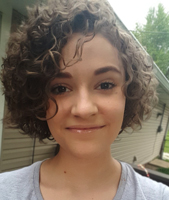 Written by Staff Writer Dusty Langdon
Written by Staff Writer Dusty Langdon
Dusty is a community college student who lives in Peoria, Il. She is a NASA Community College Aerospace Scholar (NCAS), and has always loved space, math, and learning new languages. When not writing for our blog, Dusty spends her time writing stories, reading, watching television, and hanging out with friends.
